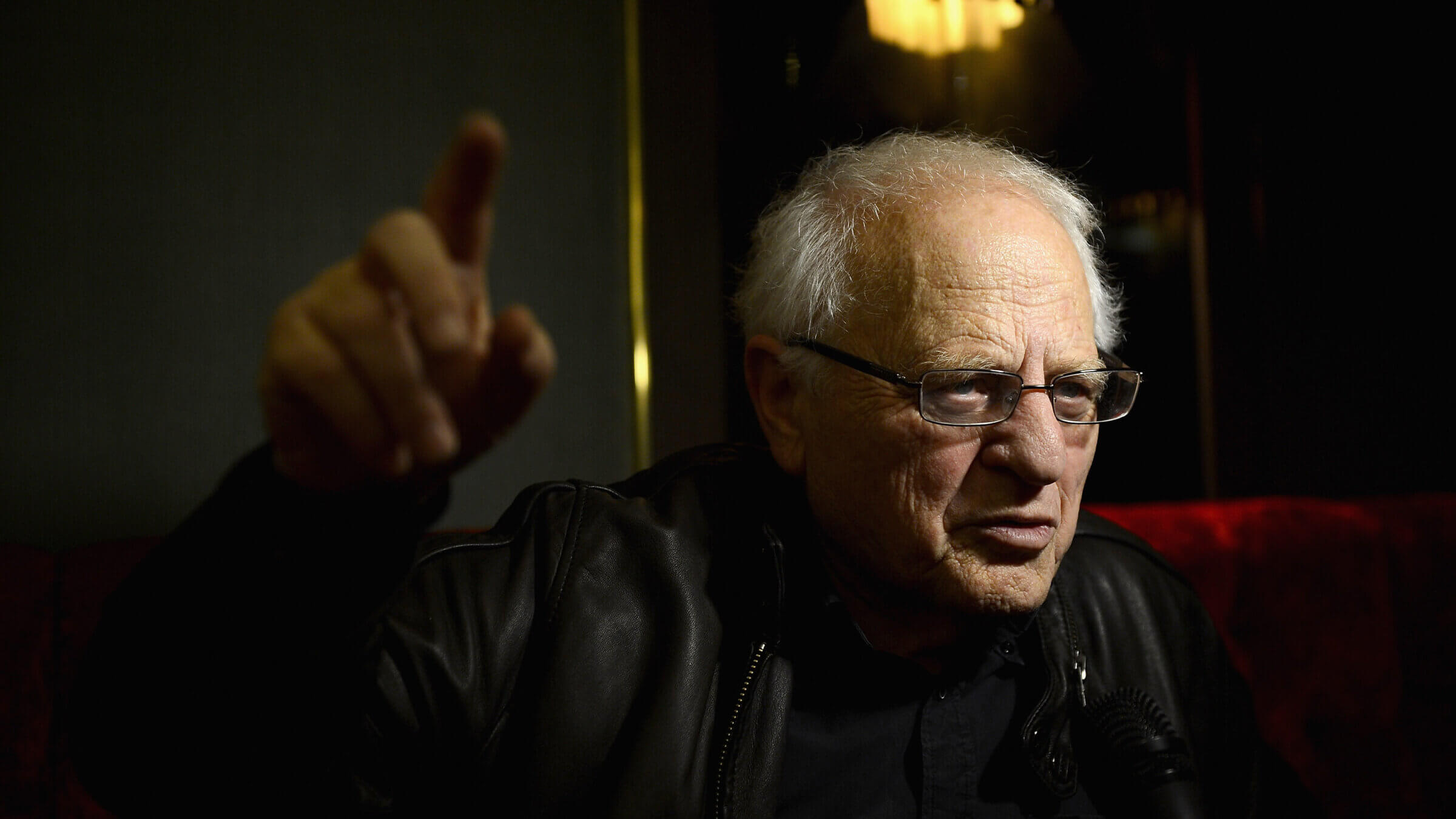The ‘wild’ Jewish director who Hollywood left behind
Even though he made only two films, Holocaust survivor Jack Garfein was a legendary figure

Jack Garfein at the London Film Festival in 2012. Photo by Getty Images
In “The Wild One,” director Tessa Louise-Salomé trains her lens on Jack Garfein, the director and acting teacher who died in 2019 at 89.
Garfein, who was born in Czechoslovakia and survived the Holocaust, embodied a peculiarly 20th century journey — from hell to Hollywood. Against all odds, he made it out of seven concentration camps and more than one death march, and arrived in New York where he had his sights set on a theater career. He studied acting and directing under the tutelage of Lee Strasberg at the Actors Studio, and helmed his first Broadway play at the age of 23; it was a premiere of Calder Wallingham’s “End as a Man,” starring then unknowns Ben Gazzara and George Peppard.
Hollywood was next and that’s where his American fortunes tumbled. He ended up directing only two movies, “The Strange One” (1957) and “Something Wild” (1961). Both were controversial and arguably ahead of their time.
“The Strange One,” based on the Wallingham play, was set in an authoritarian southern military academy and focused on a sadistic hazing incident. Homoerotic overtones surfaced and race played a role as well. The studio heads were not happy with any of it, especially the scenes featuring Black actors. They argued that the film could not be distributed in the South. Garfein refused to buckle and the Black actors remained.
“Something Wild” was anomaly for its time too, dealing, rather graphically, with rape and its aftermath. The complex relationship between the rape victim (Carroll Baker, Garfein’s wife) and a brutish mechanic (Ralph Meeker) who gives her refuge was also uncharted territory. So too was the film’s notable use of silence, long stretches on screen without any dialogue. One of the first, if not the first, indie film, it was shot on location in New York and produced by Garfein himself.
Both films were commercial flops, and on the critical front the reviews were tempered at best. The movies’ fate might not have spelled the end of a career, but Garfein was not into playing games or making nice. He alienated the powers that be, particularly movie mogul Sam Spiegel, who had produced “The Strange One.” “I’ve been bullied by bigger people,” Garfein once remarked.
In 1966, he and Paul Newman co-founded Actors Studio West in Los Angeles and his students included James Dean and Bruce Dern. He is credited with launching the careers of Pat Hingle, Steve McQueen, Shelley Winters, Jean Stapleton, Doris Roberts and Jessica Tandy, among many others.

“The Wild One” is largely an indie for insiders. But even for those who are less familiar with Stanislavski, the Actors Studio and method acting, it provides a nice introduction to a methodology of acting, teaching and directing that largely defined American theater from Eugene O’Neill to the present day.
The unifying motif was, and still is, “truthfulness,” most pointedly, how the actor uses the personal to build a character and make a scene real; how all art must emerge from self. In the case of Garfein, “The Wild One” purports to illustrate how his experiences as a Holocaust witness, survivor and refugee defined his sensibility, his aesthetic, his choice of material and the way he worked. Because he understood what it meant to have nothing to lose he was fearless.
Hinting at film noir and a touch of Bergman, the movie intercuts archival Holocaust footage with snippets of Garfein’s films and illustrious talking heads. There are interviews, long past and relatively recent, with Garfein himself in addition to director Peter Bogdanovich, biographer Patricia Bosworth, and theater and film historian Foster Hirsch among others, who offer commentary. Willem Dafoe narrates.
Though the film is informative, there are far too many clips featuring Nazi atrocities, which, though horrifying, are also numbing. More problematic, the connections that the director draws between Garfein’s wartime experiences and his art feel overstated. But the most serious gap in the narrative, a missed opportunity, is that at no point do we learn anything about Garfein’s teaching technique in the classroom or on a theater set. How did he define truth and how did he elicit it from his actors?

Today, in the wake of the #MeToo era, with University of North Carolina students suing the School of the Arts for psychological damages they claim to have suffered and Jesse Green writing in The New York Times about the brutal techniques of method acting instructors and directors, such as Strasberg, it’s worth examining whether Garfein’s methods also need reassessment. It’s quite possible that Garfein bears little or no resemblance to his mentors. But we don’t know and it’s hard not to wonder about it. If only Louise-Salomé had clued us in.
That said, “The Wild One” opens a conversation and it is well worth a look.
.



















